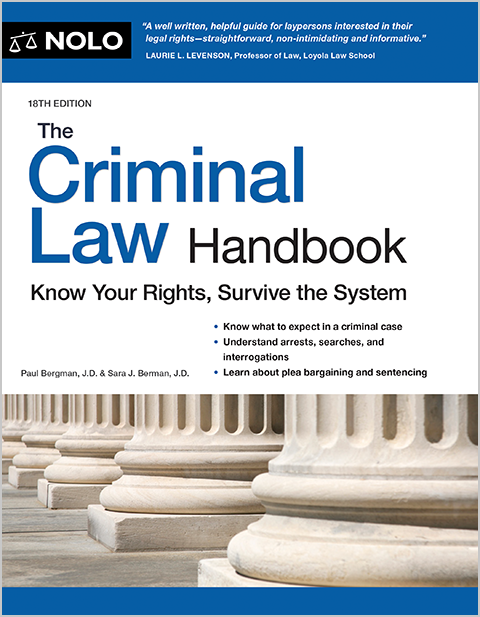If you have serious and lasting injuries from a car accident, you may be able to get Social Security or SSI disability benefits.
You may be eligible for disability benefits if you can't work because you still suffer from physical or mental injuries from a car accident. Car accident injuries can include hip and arm fractures, back problems, soft tissue injuries, and brain injuries. In addition to physical injuries from a car accident, you might experience cognitive issues or psychological trauma that can lead to depression or anxiety.
If any of your impairments have persisted for at least a year (or are expected to last for that long), and have prevented you from working, then you should consider applying for disability benefits from the Social Security Administration (SSA).
Can You Get Disability After a Car Accident?
Yes, you can get disability benefits from Social Security if your car accident injuries cause you limitations that make it difficult for you to do physical activities or focus on work. Social Security will approve you for benefits if you either show that there are no jobs you can do with your new limitations or if you can show that your symptoms and limitations meet the criteria in a disability "listing."
Meeting a Disability Listing After a Car Accident
The most straightforward way to be found disabled by Social Security is to meet the medical requirements for a disability listing. These listings are found in the Listing of Impairments (the "Blue Book").
Following are the most common disability listings related to car accident injuries and the criteria needed to qualify for disability benefits under the listings.
Social Security's Listings for Fractures of the Leg or Arm
A fracture occurs when your bone breaks apart or is cracked as a result of trauma.
Social Security's disability listing 1.22 discusses fractures of the thigh, shin, pelvic, or tarsal bones (in the foot). To meet this disability listing, you would need to prove you have:
- a non-healing fracture with no "solid union" of the bone, and
- an extreme impairment in your ability to walk that continues for at least 12 months. You also would need a device such as a walker or two crutches that prevent you from using both of your arms effectively.
Listing 1.23 discusses fractures of the arm, wrist, or elbow bones. To meet this disability listing, you would need to prove you have:
- nonunion of the bone
- ongoing medical treatment (that is, you've tried surgery and other treatments to help restore use of the arm), and
- no functional use of the arm for at least 12 months. You would need to be unable to pick up items with your hands and fingers or use your arm to carry objects.
To use these listings, you also would need to show the presence of a fracture through the use of an X-ray, an MRI (magnetic resonance imaging), or a bone scan.
Social Security's Listing for Back Disorders
A car accident may worsen a pre-existing back problem or cause a new injury. Listing 1.15 discusses disorders of the spine including severe degenerative disc disease, a slipped disk, or a broken vertebra. To meet this disability listing, you would need to prove you have one of the following conditions:
- compression of a nerve root shown by an MRI or other imaging, or
- a diagnosis of lumbar spinal stenosis shown by an MRI or other imaging.
For more information, see our series of articles on disability benefits for back injuries.
Social Security's Listings for Soft Tissue Injuries
A car accident can cause injuries to tendons, ligaments, muscles, nerves, blood vessels, and skin. Social Security defines soft tissue injuries to also include burns.
Listing 1.21 discusses a soft tissue injury or burn of an arm, a leg, the torso, face, or head. To meet this disability listing, you would need to prove all of the following.
- You have soft tissue injuries or burns to any body part.
- You're receiving ongoing surgical treatment.
- You haven't reached a point where no further improvement is expected.
Listing 8.08 is specific to burns, but doesn't require evidence of ongoing surgical treatment. To meet this disability listing, you would need to prove that you have widespread skin lesions, lasting at least 12 months, that make you unable to:
- get up from a seated position and remain stable upright, due to lesions in any two extremities
- remain stable when standing or walking, due to lesions in both lower extremities
- use both arms or hands to independently start and complete work, or
- use one arm/hand to independently start and finish work, and you need to use the other arm/hand to use an assistive device (such as a cane).
Listing 5.02 discusses gastrointestinal bleeding (involving the esophagus, stomach, or intestines). To meet this listing, you would need to prove all of the following.
- You had blood transfusions at least three times in one year.
- Each transfusion required at least two units of blood.
- Each transfusion was spaced at least 30 days apart from each other.
If you have chronic skin infections or contractures that limit your movement, you may qualify under the listing for chronic skin conditions.
Social Security's Listing for Traumatic Brain Injuries
The impact of some car accidents can also cause concussions or possible damage to the brain. Social Security's listing 11.18 covers traumatic brain injuries (TBIs). To qualify under the TBI listing, your car accident must have caused you extreme difficulty in one of the following, for at least three months after the accident:
- the ability to balance while standing or walking
- to stand up from a seated position, or
- to use the arms and/or hands.
Or, if you have a limitation in your physical functioning that isn't severe enough to be extreme, you can meet the listing if you also have a serious limitation in any one of the following mental abilities:
- understanding, remembering, or using information
- interacting socially
- concentrating and working quickly, or
- adapting to new changes, regulating your emotions, and taking care of yourself.
For more information, see our article on getting disability for traumatic brain injuries.
Social Security's Listing for Anxiety Disorders
Listing 12.06 discusses when disability benefits are available for anxiety; generalized anxiety or post-traumatic stress disorder are not uncommon after car accidents. For more information on the criteria for getting disability for anxiety-related disorders, see our article on anxiety and disability.
Can Get Disability After a Car Accident Without Meeting a Listing?
Even if you don't meet one of the disability listings above, the SSA will determine your residual functional capacity (RFC) to see if you have the ability to work even a simple job.
Your Physical Capacity to Work
When you've been involved in a car accident, Social Security will review your hospitalization records and consider whether your medical treatment has been successful and whether there were complications. In addition, Social Security will consider whether the medications you take are effectively controlling your symptoms of pain, whether you've complied with all of the treatment recommended by your doctor, what limitations you have, and what restrictions your doctor has put on your ability to work, if any.
After assessing your ability to stand, walk, and lift or carry objects, the SSA will give you an RFC of sedentary, light, medium, or heavy work. For instance, if one of your arms was fractured and has not recovered, the SSA might give you an RFC limiting you to light work, with only occasional use of the hands.
But you generally need to have Social Security give you an RFC for "less than sedentary work" to be found disabled, unless you're over 50. If you're over 50, you might be found disabled even with an RFC for sedentary or light work, if you can't do your past job and you can't transfer to a new type of work because you don't have job skills that could be used in a new line of work. (When you're over 50, a different set of rules apply, called the grid rules.)
Your Mental Capacity to Work
If you list any cognitive or social difficulties on your disability application, Social Security is required to investigate whether you have a severe mental impairment. If the agency finds that you do, the agency will create a mental RFC for you.
Your mental RFC will discuss whether you can do things like understand and remember instructions, interact well with other people, tolerate normal levels of stress, and maintain regular attendance.
Social Security may find that there are many jobs that you can't do if you receive a mental RFC that includes limitations like the following:
- an inability to concentrate on tasks on a long-term basis
- an inability to perform most basic work tasks quickly and under a deadline, or
- an inability to work well with co-workers.
But if the SSA finds you can do some type of simple unskilled job that doesn't require much contact with co-workers, the agency is likely to find that you aren't disabled.
What to Do If Social Security Denies You Benefits
If Social Security denies you benefits because your RFC shows there are jobs you can do, you should consider appealing, assuming you disagree with the SSA's findings.
On appeal, you might be able to show that your RFC didn't include all of your limitations, or that Social Security didn't properly consider all the limitations in your RFC. For instance, if you're currently taking pain medication that affects your ability to concentrate, you might question whether you're able to do even sedentary work on a regular basis. Or if you have muscle weakness in your arm or hand due to a fractured arm bone, you might think that your RFC should limit that arm to "no handling or fingering of objects." An RFC with this restriction would rule out many jobs and would make it less likely that there are any jobs you could do.
If you receive a denial letter and feel your case is strong enough to win an appeal, consider contacting a disability lawyer to help you file the appeal paperwork before the deadline (60 days after the denial). Here's what to do if you get denied.
If you don't expect to be off work for a whole year, but you have had to take time off work, you might be able to qualify for short-term disability benefits or paid leave through your employer or your state. And depending on the circumstances of your accident, you might also have a personal injury claim for a physical problem like back injuries or a mental issue like PTSD from your car accident.

